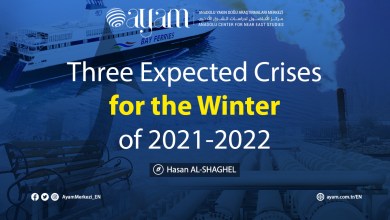Can the protests in Iraq bring any substantial change?

On May 9, protesters in Karbala city set ablaze portions of the fencing around the Iranian Consulate. It is response for the assassination of Ehab al-Wazni, a vocal opponent of corruption and Iran’s influence in Iraq and a coordinator of protests in Karbala, pro-Tehran armed groups are legion. Al-Wazni’s assassination was not a sole incident in Iraq. From the beginning of the protests, several unidentified murders have manifested itself in Iraq. Al-Wazni managed to escape death in December 2019, when men on motorbikes killed fellow activist Fahem al-Tai, using silenced weapons. Both men were key figures in a national protest movement that erupted against government corruption and Iranian interference in Iraq in October 2019. Hisham al-Hashimi was one of the most respected Iraqi political analysts also killed by gunmen. Other notable activists like Tahseen Osama and Reham Yaqoub were assassinated in August 2020 in similar circumstances to al-Hashimi.
Since December 2019, protests in Iraq have challenged both Iraqi traditional political parties and the influence of Iran. The forces demanding the parliamentary election to be organized in May 2022 might have involved in the assassination of al-Wazni and the withdrawal of some candidates of the Bayariq Al-Khair parliamentary bloc from the upcoming elections. However, Kataib Hezbollah militia, one of Iran-linked armed groups, accused the UK embassies in Baghdad and Beirut of provoking the angry protests that engulfed several cities in the aftermath of al-Wazni’s assassination. While the Iraqi parliamentary election, initially planned in May 2021, is postponed in October 2021, the election process increases the tension between protests and Iraqi traditional political parties and Iran-linked groups. Protesters, with implicit support of significant Iraqi clerics, have called for profound domestic political and economic reform, and a rejection of Iran’s ideological and political influence in Iraq. Thus, the senior Iraqi Shia cleric Ali al-Sistani, who holds significant religious power in the country, echoed the demand of the protesters that Iran should get out of Iraq: “No person or group, no side with a particular view, no regional or international actor may seize the will of the Iraqi people and impose its will on them.” It is useful to state which reason fuels popular disdain for Iran in Iraq. It is the fact that protests have been exposed to the regular violence committed by the Iran-linked militia forces. For the United Nations, hundreds of protesters have been killed, others have been kidnapped and disappeared since October 2019. The Iraqi governments did not throw its weight about the Iran-linked militia forces.
Another demand of the protesters was the adaption of a new election law that reduce the monopoly of traditional political parties in the parliament and enable independents and small and newly established parties to enter in the parliament. Al-Sistani, also, helped accelerate the law’s adoption. Thus, a new electoral law was approved by the parliament. Whereas past election laws allowed large and medium-sized parties and coalitions to win at the expense of independent candidates and small-sized parties, the new electoral law designated each of Iraq’s governorates as a single district. The new law divides Iraq into 83 districts. Dividing Iraq into more electoral districts, in principle, should create more competition and allow for the adoption of individual nominations for candidates. Thus, it should allow for small political parties to compete in the elections. However, the new electoral law will maintain the influence of several well-established political forces and ensure their victory in upcoming elections.
Although the new electoral law allows independent candidates and smaller actors to compete in a normal political and security situation through grass-roots bases, the existing parties with strong local presence and ability to influence, such as the Sadrist Movement led by Muqtada al-Sadr, benefits the most in practice. The traditional political parties might focus on selecting candidates with tribal and even religious backgrounds because they hold social capital within their regions. These social groups are strong allies of the ruling political forces and have in the past been instrumental in the victory of party candidates in return for privileges. Therefore, the new electoral law will not bring about any substantial change in the political reality of the country because it will lead to replace some existing party candidates by their local tribal or religious backers.
The security situation dilutes the protests’ challenge to the influence of Iran in Iraq. The death of Soleimani and Abu Mahdi al-Muhandis, the de facto commander of the Popular Mobilization Forces (PMF), created a vacuum that militia leaders struggle to fill. Abu Fadak al-Mohammedawi, Muhandis’s successor, has failed to fill the void by enabling characters such as Khazali to take on a leading role among Iran-backed militias. In addition, Sadr’s Alliance toward Reforms and the Fatah Alliance’s ownership of weapons violates the law on political parties that prohibits the formation of armed factions. These parties might use them to influence election outcomes. Finally, the ethno-sectarian apportionment (Muhasasa Ta’ifia) in designating government positions remove a normal political situation in accordance with Iran’s overall strategy for Iraq that keeps it in a constant state of uncertainty, with weak state institutions and control. Iraqi Prime Minister Mustafa al-Kadhimi has promised to return former militias of PMF to service in a meeting with MPs representing the Fatah Alliance. Whereas al-Kadhimi government involve budget allocations for the return of former PMF members in the budget law, the parliament eliminated those allocations to reduce expenditure. Consequently, the political and security situation will prevent the protesters from challenging to Iraqi traditional political parties and the influence of Iran.


